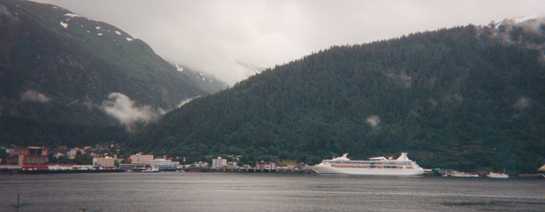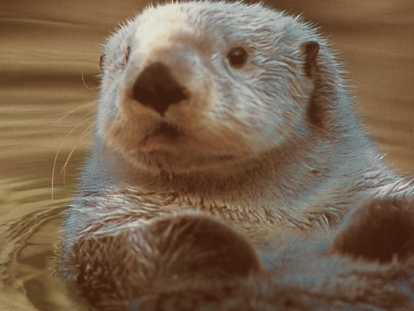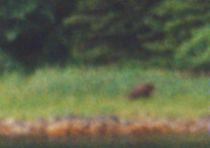Wildlife Above and Below
 |
Saturday, July 10 |
| When last I wrote I was in Skagway, expecting to be able to write from subsequent ports of call. In the end, we were just too busy while we were on shore, and it was too expensive on the ship. At 50 cents a minute, I just couldn't focus my creative energies. We enjoyed our day in Skagway with the train ride and a rather touristy experience at an imitation of a lumber camp. Actually there was something very realistic about that camp -- the rain. It was a tent camp with a show in a large tent and you could really get a feeling of just how dreary it must have been being in a rain forest for months, where nothing ever dried out. |
| We spent the afternoon in Skagway, a town of 700 in the winter that expands to three times that in the summer with those working the tourist trade. We had some chili in front of a woodstove in the Red Onion, the town's most famous bordello. It was pouring rain and dreary when we had arrived in town, but by the time we headed back outside, the sun was shining and people were sitting on benches eating ice cream. That's mountain weather for you! |
| Sitka was originally a Russian port of call and it is an attractive town on the outside of the islands that make up the "Inland Waterway." Chris and I actually didn't get to see the town because we had booked ourselves on two adventures which left from the boat dock. The morning trip was on a boat called a "semi-submersible" which is similar to the glass-bottom boats one finds in Florida (I guess -- I never saw those). Our glass was not on the bottom, but on the sides at a 60 degree angle. We were semi-submerged -- eg. six feet under the water, but the boat took us into very shallow waters so we could see quite a bit. At first, as they were explaining different types of seaweed, I thought, this wasn't going to be very interesting, but as we learned to identify a half dozen different kinds of starfish, sundry crabs and a variety of fish that like to camouflage themselves in the seaweed, I became quite fascinated. Toward the end they sent down a diver who picked up various animals off the ocean floor and swam around in front of the windows so we could see them. |
 |
| |
| In the afternoon we headed out on a high speed boat to look for sea otter and other animals. We spotted whales right off the bat and got some good pictures of humpback whales' tails as they flashed them before diving. For the best pictures, I dare you to request the video version of this trip. In truth, the video camera offered much greater magnification, and the chance to stay with an animal when it moved. |
 |  | |
 |  |
| During the last part of the mornings' outing I had shot some great film of bald eagles, so I was a bit nonchalant at further spottings in the afternoon -- how quickly we become jaded. In fact, the second time I managed to get film of an eagle landing in a tree, which is harder to capture than one taking off, so I will have some great footage if I ever get around to editing this tape. |
| The last search was for a bear along the coastline. In Alaska they only call the inland bears grizzlies. They are leaner and smaller because they live on a vegetarian diet (unless they go after a hiker or two...). The coastal bear of the same species is called innocently the "brown" bear. It is by far the largest, most dangerous, and aggressive. It's size is the result of a diet of salmon. The "black bear," which may be brown, even light brown in color, can also be found along the coast, but is not considered as dangerous, and is certainly not as large.
We saw two bears at a great distance, but just before we headed back to port we found one close enough for some good pictures. It was not like the leopard I photographed in South Africa last year, where I was close enough to photograph the blood vessels in his neck, but it is still clearly recognizable as a bear, even a grizzly. Well, I guess you have to trust me on this one... |
 |  |